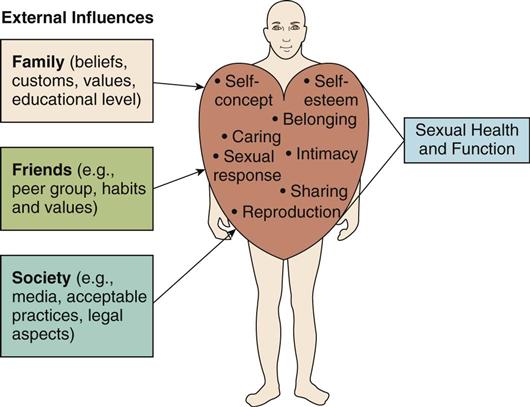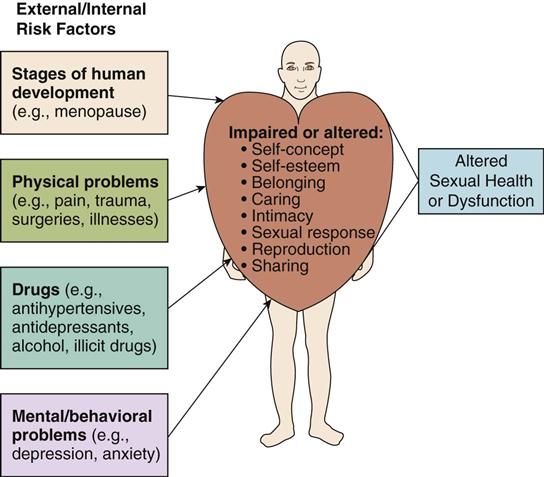Concept Overview
Sexuality
Unlike the physiologic human needs introduced in other section openers of this text, sexuality is a complex integration of many physiologic, emotional, social, and cultural aspects of well-being. It is closely associated with self-concept, self-esteem, role relationships, sexual response, and reproduction. Sexuality comprises other related human needs, such as belonging, intimacy (e.g., touching, kissing), sharing, and caring. When these needs are met, a person is sexually healthy (Fig. 1).

Sexuality, therefore, is a vital part of one’s holistic being from birth to death. During the stages of human development, a person’s attitudes, beliefs, and values related to sexuality are influenced and shaped by the environment, including family, friends, and society. For example, cultural beliefs affect the nature of physical sexual pleasure. The media also play a large role in developing views on sexuality. Some societies, such as the United States, tend to value youth and beauty more than aging and wisdom. As a result, people in these societies may feel less physically attractive and desirable for intimacy and belonging as they age.
Various external and internal risk factors can alter or impair sexual health. In many cases, they cause physical sexual dysfunction, which then affects emotional needs such as self-esteem (Fig. 2). These factors include:

Stay updated, free articles. Join our Telegram channel

Full access? Get Clinical Tree


